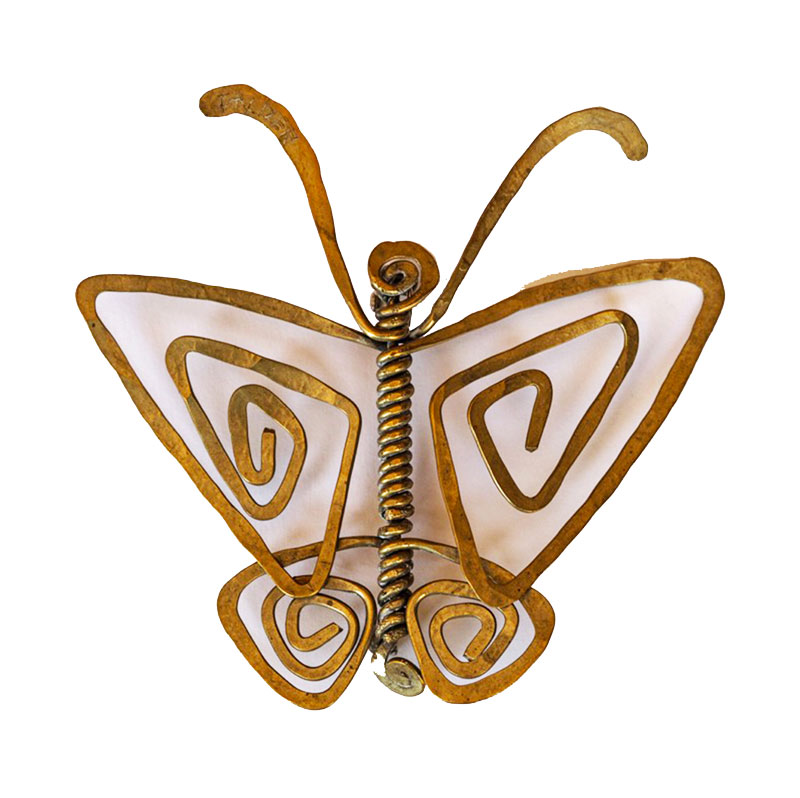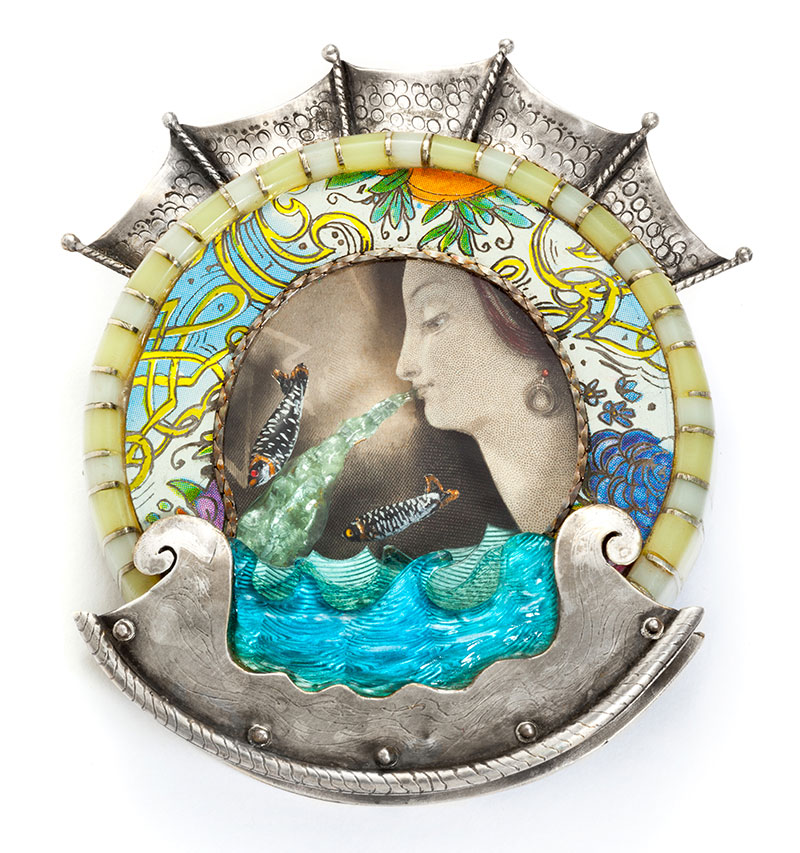"Jewellery is art, for me, is different because each piece is made by an individual, it is not made by industry, it is made by an artist who has a unique vision and who has the ability to enquire about a range of aesthetic ideas and to incorporate a particular personal concept. Since we decided to curate or organize an exhibition of american work, there was a definite obligation on my part to research and to carefully examine the field, and to try to select twentyfive or twentysix works that would illustrate the range of aesthetic, you know, or the range of… the broad range of creative aesthetic work that existed in the United States, from the late twentieth century to the early twentyfirst century."
"Jewellery is art, for me, is different because each piece is made by an individual, it is not made by industry, it is made by an artist who has a unique vision and who has the ability to enquire about a range of aesthetic ideas and to incorporate a particular personal concept. Since we decided to curate or organize an exhibition of american work, there was a definite obligation on my part to research and to carefully examine the field, and to try to select twentyfive or twentysix works that would illustrate the range of aesthetic, you know, or the range of… the broad range of creative aesthetic work that existed in the United States, from the late twentieth century to the early twentyfirst century."
During the 20th century, numerous sculptors dedicated themselves to making jewellery, transferring their figurative skills, sometimes in the form of simple miniaturisation or by working with the minute scale of jewellery itself. Jewellery, for everyone, can represent a sculpture for the body, transmitting concepts and desires, especially in terms of artistic research. Helen Drutt’s selection present jewellery by US artists who, like Alexander Calder or Art Smith, have renewed the relationship between jewellery and art.
Spilla, Butterfly, 1940
Alexander Calder
Brooch, Butterfly, 1940
brass
4.5 x 4.75 cm
Makler Family collection
Though most jewellery by Calder is nonrepresentative, without question this brooch refers to a butterfly. The continuous linear gesture of metal wire forms the wings and coils into the central spine and elevated antennae. Wrapping was the technical technique used to fabricate this brooch.
Night Fishing
Elizabeth Garrison
Brooch, Night Fishing #1, 1986
ebony, enamel, silver
7.62 x 3.17 cm
Private collection, USA
This brooch references the figurehead of an old ship, its carved ebony head emerging from the body of a richly enameled fish. A golden fabricated lure dangles beneath as a warning that life will soon end for the fish.
Garrison says, “Night Fishing #1 speaks of the vast ocean in darkest night.”
Warning Plutonium Pirate
Betsy King
Brooch, 1991
sterling silver, copper, plexiglas, paper,
foil and ‘plutonium’, fabricated
8.89 x 10.16 x 0.63 cm
Private collection, USA
A pictorial image of a popular superhero from a comic book is carefully encased in shaped silver. The brooch’s title reinforces the image’s warning that Plutonium Pirates are waging nuclear war. This piece is an example of American narrative jewellery.
Anchor
Robin Kranitzky & Kim Overstreet
Brooch, 2014
mixed media, silver, enamel, epoxy,
paper fragments
7.62 x 6.35 x 1.58 cm
Private collection, USA
Kranitzky and Overstreet use fragments of postcards and found objects in their images to lead the viewer into an imaginary world. In this work, two spirited fish, abandoned in a deep swirling ocean of uncertainty, together
seek stability. The brooch is completely fabricated.
Spilla Untitled
Richard W. Mawdsley
Brooch, Untitled, 1998
18k yellow and white gold, pearls,
pattern welded steel by Daryl Meyer
9.5 x 7 cm
Collection of Jessica Luangsuwan, USA,
courtesy Helen Drutt, Philadelphia, USA
Meticulously worked gold metal tubing creates two arms holding ‘fountains of fireworks’ with a central motif by Daryl Meier made of patterned welded steel with images of the American flag. This brooch was commissione for an exhibition that honored the former US Secretary of State Madeleine Albright.
Joseph Pillari - Spilla
Joseph Pillari
Brooch, Untitled, 2011
silver, enamel
7.62 x 5.08 cm
Private collection, USA
This oval brooch begins with discarded photographs that are reused to create new scenes via the technique of collage. Once reconstructed, the new images are copied and painted in enamel by hand. Each image is bound in shaped silver.
N’Kondi Collar
Nancy Worden
Necklace, N’Kondi Collar, 2008
silver, steel, brass, wood, glass, plastic,
celluloid, reptile hides, horn, cow bone beads,
badger hair
53.34 x 15.24 x 3.81 cm
Collection of the artist, USA
A n’kondi is a sculptural figure made by the Kongo people in Central Africa to promote healing and cooperation. Each nail driven into a sculpture was chosen according to the kind of agreement being made. Since n’kondi always portray a male figure, male artifacts—like shaving brushes—were used in this necklace.






















Follow us on social networks
Subscribe to the newsletter